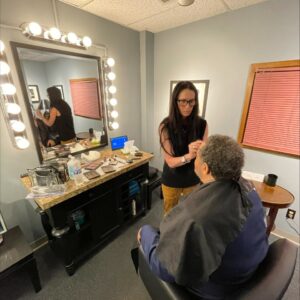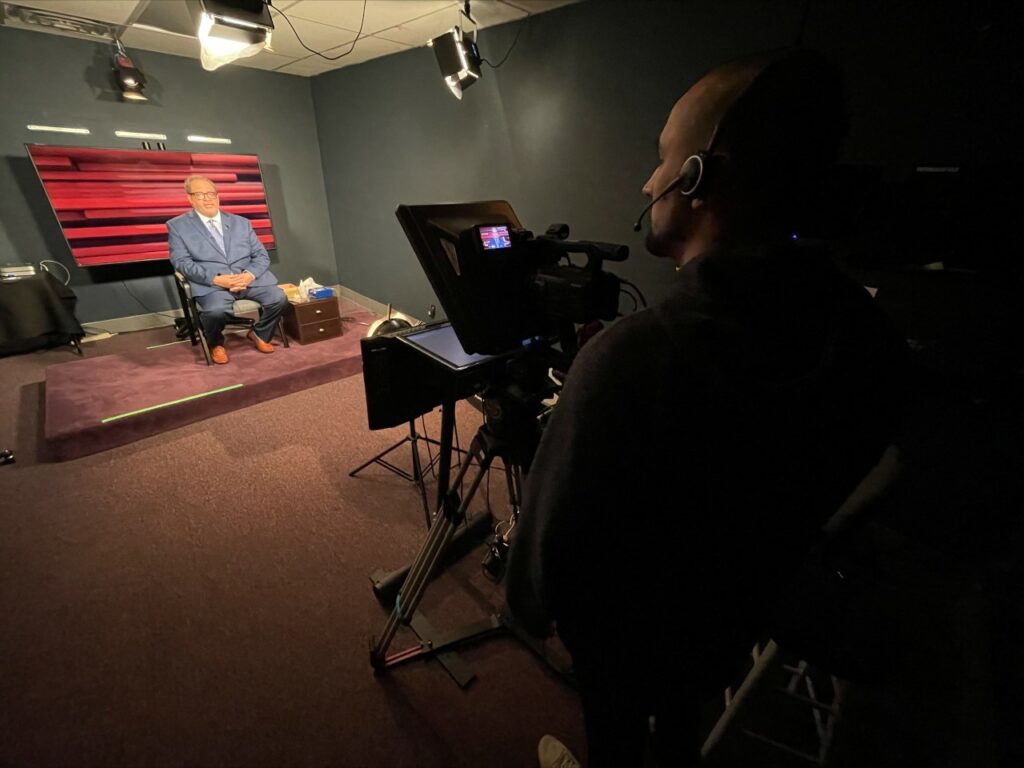StagePost has countless guests who come to our studios or reserve our mobile studio to be on live, national TV. Being featured on a live broadcast is exciting but can also be overwhelming. Read on for tips to nail your next appearance!
1. Do Your Research
Find out some essential info before agreeing to do an interview, like:
- What is the network or show?
- Who is the typical viewer?
- Who will be the interviewer?
- What topic will we discuss?
- Is this a one-on-one, will other guests or interviewers address the same issue?
- How long is the interview?
- What is our time slot?
- Will a hair and makeup artist be available? Always say yes to hair and makeup so you can look and feel your best.
2. Identify 3 Key Points of Your Message
It’s never a good idea to go into any situation cold turkey. After all, you wouldn’t run a marathon without training.
Once you know your topic and the time you’re allotted to speak (generally three to five minutes), carve out three key points you need to address. Make sure they meet the three “C’s” of TV; Your message should be:
- clear
- concise
- conversational
3. Remember Your Audience
In the U.S., the average adult reading level is 8th grade, which means no big words. And depending on the program you’re on, the audience’s reading level may be even lower. If your topic is health, consider speaking to a 5th-grade reading level, as individuals with poor reading proficiency tend to have increased health problems.
4. Check Your Contact Info
Double-check any web link, phone number, and social media handles you plan to share. Whether you’re promoting yourself or an organization or offering an opinion on a specific topic, you want to give viewers the correct information and gain some followers too!
5. Practice, Practice, Practice
Journalists or hosts enjoy asking tough questions. Be ready for this so you’re not caught off guard, with a list of potential questions that could come up and your prepared answers. A writer at Forbes recommends practicing moving the conversation back to your message if the interviewer goes off-topic.
Enlist a friend to help. Write down your list of probable questions and have them pretend they’re the interviewer while you practice what you’ll say. Another good tip is to set up your laptop or phone and record your session on video, so you can critique yourself and make changes where you see fit. Using the Zoom record function is also helpful, especially if your interview is over Zoom or your live shot is at a remote studio like StagePost.
6. Dress for Success

While video is a visual medium, you want people to remember your message rather than your outfit choice.
Here are some broadcasting “Do’s” and “Don’ts” when it comes to dressing for the camera.
- Lose the patterns and choose solid colors. Even in the age of 4K video, patterns confuse cameras; it may appear as if the design is moving or fuzzy.
- Avoid white, reds, and oranges, and be careful with black and green. Black tops can sometimes make you look like a floating head on camera. Black bottoms are fine, though! Green is ok if there isn’t a green screen. Pure white reflects much light and can even glow on camera, and reds and oranges bleed.
- Pastels are always a safe bet, as are subtle grays and browns.
- Everyone looks good in navy blue.
- Bring one or two outfit choices if you’re still uncertain.
- Ensure your clothing is free of wrinkles, pet hair, and fuzz.
- If a hair and makeup artist is available, say yes!
- If you wear glasses, consider wearing contacts unless you have anti-reflective / anti-glare lenses.
Besides looking good, you want to feel good, too! So get some rest the night before, stay hydrated, and don’t overdo it on the coffee; there’s nothing worse than being tired, nervous, and jittery from all that extra coffee!
7. Arrive Early
Showing up thirty minutes before your call time will help you acclimate to the studio and even give you extra time in the makeup chair! You’ll be able to go over your notes too.

8. Have Fun and Say Thank You
While being interviewed can be a little nerve-wracking, you’ve taken the time and thoroughly prepared, so have fun. Also, don’t forget to smile and thank your interviewer for inviting you to their show. After all, you are their guest!

